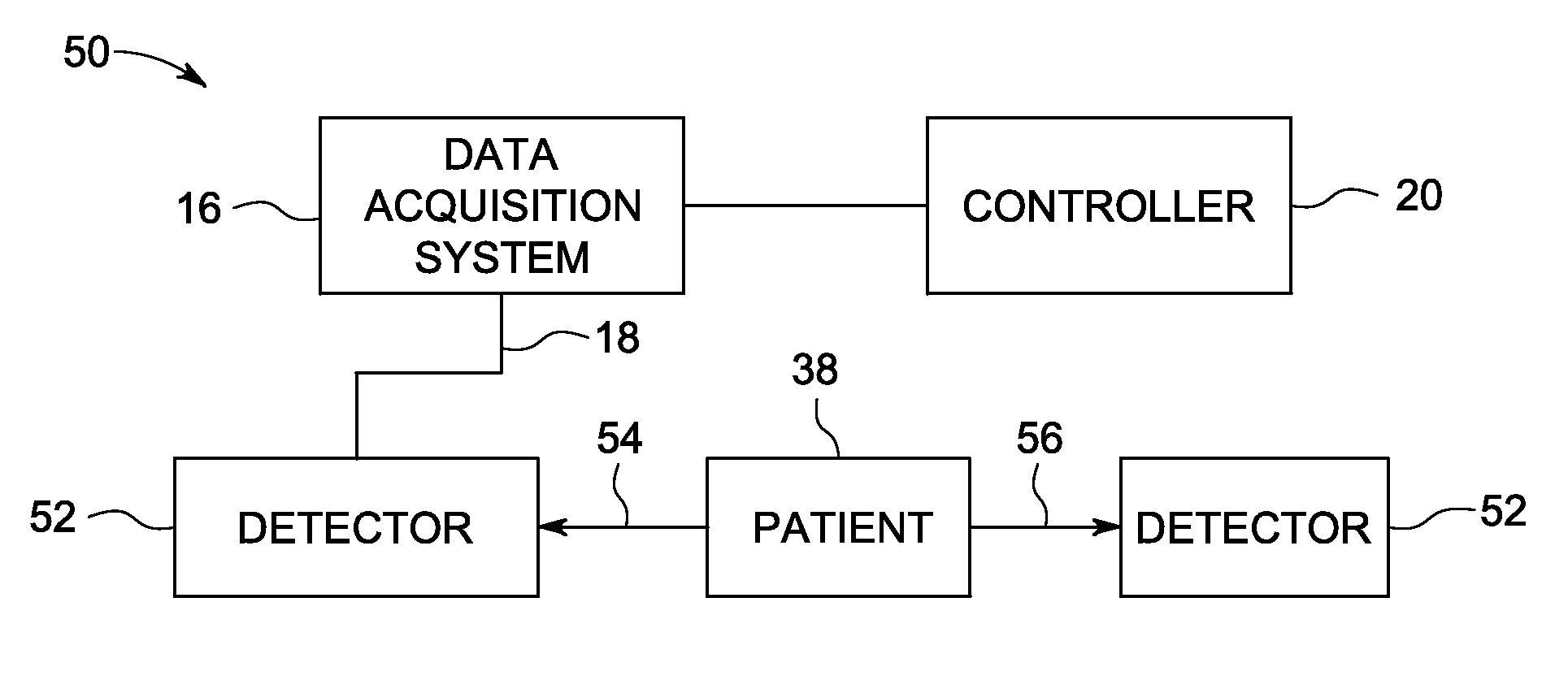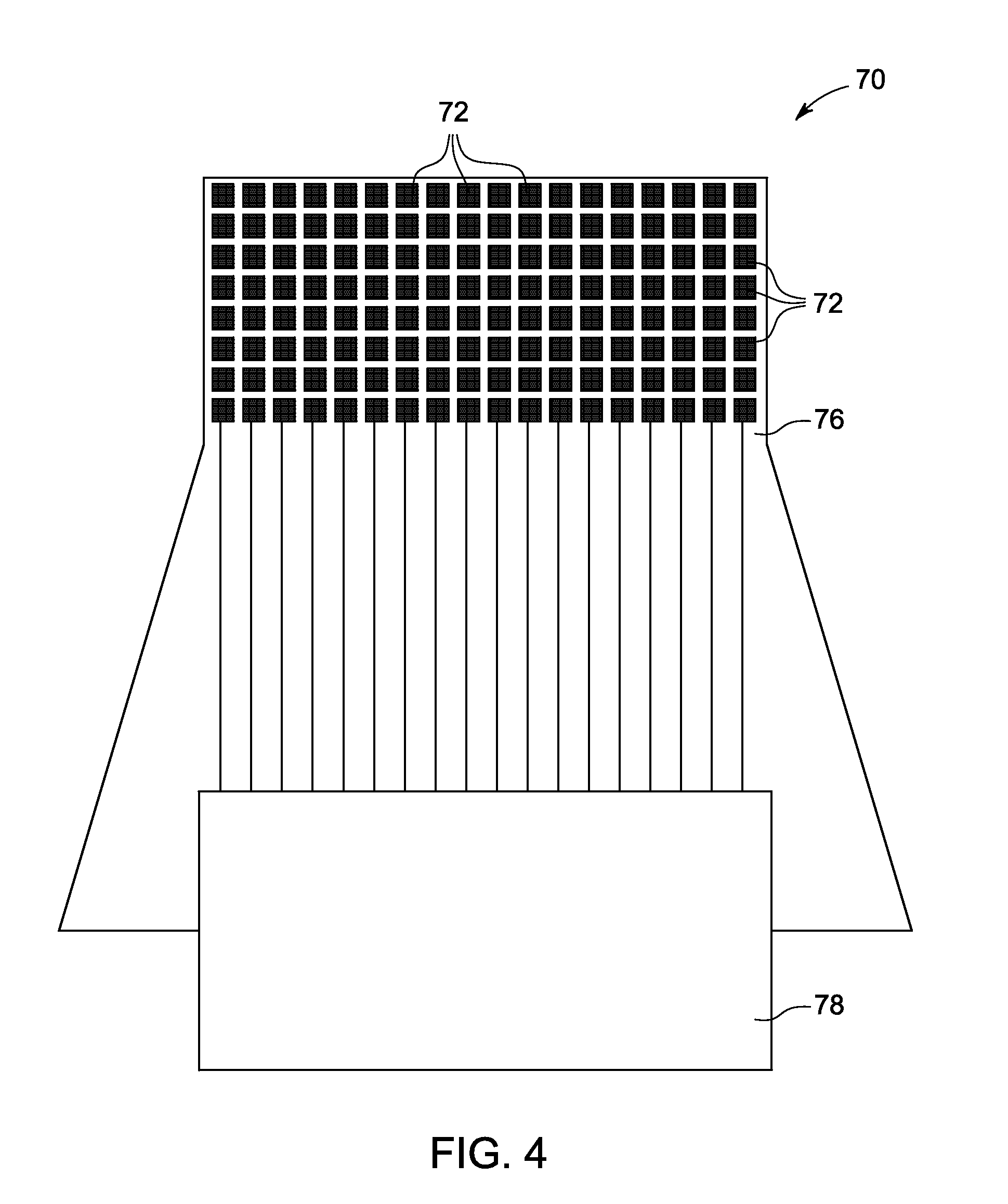Anode-illuminated radiation detector
a radiation detector and anode technology, applied in the field of anode illumination radiation detectors, can solve problems such as loss or reduction of detector efficiency
- Summary
- Abstract
- Description
- Claims
- Application Information
AI Technical Summary
Benefits of technology
Problems solved by technology
Method used
Image
Examples
Embodiment Construction
[0021]The present disclosure relates to the use of direct conversion detectors in radiation-based imaging applications. In a direct conversion detector, each radiation photon that is absorbed in the sensor material is converted to a number of electron-hole pairs in proportion to the energy of the radiation photon. A voltage applied across the thickness of the sensor drives the electrons to the anode and the holes to the cathode. Because the mobility of electrons is typically greater than holes in semiconductors with good radiation stopping power, the electron charge is collected on an array of anode electrodes. The electron charge is converted by read-out circuit to a digital imaging signal. The holes are collected on a cathode that is common to the whole sensor area and are not converted to an imaging signal. The anode pixel receiving the electrons is spatially correlated to the arrival position of each photon. Typically, the anode electrode is the pixel-array electrode and the cat...
PUM
 Login to View More
Login to View More Abstract
Description
Claims
Application Information
 Login to View More
Login to View More - R&D
- Intellectual Property
- Life Sciences
- Materials
- Tech Scout
- Unparalleled Data Quality
- Higher Quality Content
- 60% Fewer Hallucinations
Browse by: Latest US Patents, China's latest patents, Technical Efficacy Thesaurus, Application Domain, Technology Topic, Popular Technical Reports.
© 2025 PatSnap. All rights reserved.Legal|Privacy policy|Modern Slavery Act Transparency Statement|Sitemap|About US| Contact US: help@patsnap.com



